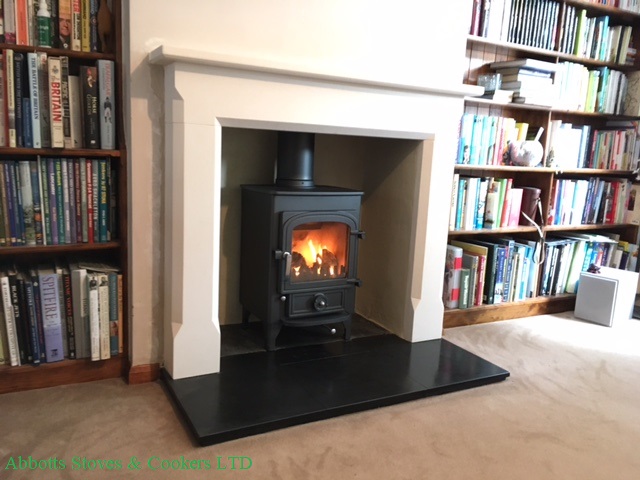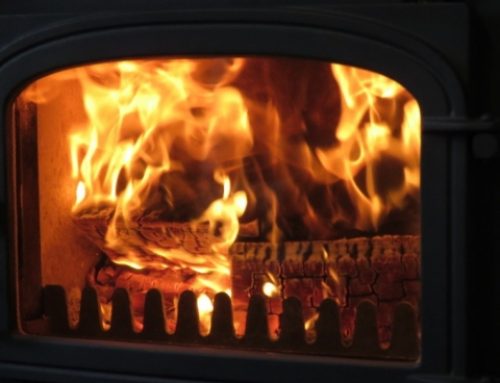“To line or not to line”, to misquote our most famous literary giant, “that is the question”. At Abbott Stoves & Cookers we would always say “YES” line, if it is at all possible both physically and financially.
There are always instances when it is impossible to install a liner into a chimney either because of the access, bends in the chimney or indeed other chimney issues, a liner just won’t go down
the brick chimney or, of course, it may be outside your budget. But, if at all possible we would always advocate lining a chimney for a stove installation.
So speaks the voice of experience, who because of difficulties reaching and working on a very high chimney stack, decided not to line the chimney and suffered a fire within the said chimney.
That is a story for another day and except for a very red face there was no lasting damage!
When you visit our showroom in Stanstead Abbotts, we will talk to you in detail about chimney lining and we will also visit your home to carry out a survey and discuss any difficulties we
might have in lining your chimney.
Whilst many of you will have done some ‘homework’ before visiting us, a little knowledge can sometimes be a dangerous thing and for those who would like to know more, here are a few tips regarding lining.
A chimney is a passage from the place of combustion to the outside world. Warm flue gases should rise through this passage to the point of exit cleanly and quickly. For a chimney to operate
efficiently it should be smooth, warm and as straight as possible. If a chimney is irregular and rough, or cold and damp, the flue gases and smoke will move slowly. Cooler gases will mean an inadequate chimney draw and poor flue gas speed.
A chimney liner will substantially decrease your chimney volume, consequently higher flue temperatures will be maintained and flue gases will travel faster generating greater and more
consistent chimney draft. A warm flue will collect less deposits, cleaning will be much easier and condensation should not occur within the flue. It is possible to clean a lined flue well, leaving the liner almost as clean as when new. Remember all flues with or without a liner should be cleaned annually.
It is rarely possible to remove all deposits and debris that accumulate in an unlined flue, there are always holes, corners and bends where the brush does not reach. The combination of a ‘cleanburning’ stove and a warm flue should mean chimney fires are a thing of the past – they are a common and frightening occurrence in an unlined chimney and may cause substantial damage. See my comment above!
Due to the efficiency of today’s stoves, very little heat goes up the chimney – it is coming out into the room and consequently the chimney is initially very cold and until the chimney warms up will not work correctly. A well installed stove should not emit smoke or fumes into the room and this can happen if the chimney is cold – if a flue is damp and cold it will produce a poor chimney draft. This poor draft may reduce further during slow burn periods as the flue cools.
Maintaining high flue gas temperatures within a flue liner will eliminate any future problems and remember, whatever your decision, burn good quality fuels – kiln dried or well seasoned hardwoods or a good quality smokeless fuel suitable for burning in a stove.
Back to the lining of the chimney, here at Abbott Stoves and Cookers we use a high quality 316 grade stainless steel liner which we have used from the same British manufacturer for many years. It comes with a guarantee of the lifetime of the stove. If you are mainly using smokeless fuel we recommend a 904 grade of stainless steel which has a guarantee of 25 years and with regular care and maintenance these guarantees have been rarely used but always honored.
Come and talk to us – we will discuss everything you want to know in more detail.



Leave A Comment
You must be logged in to post a comment.